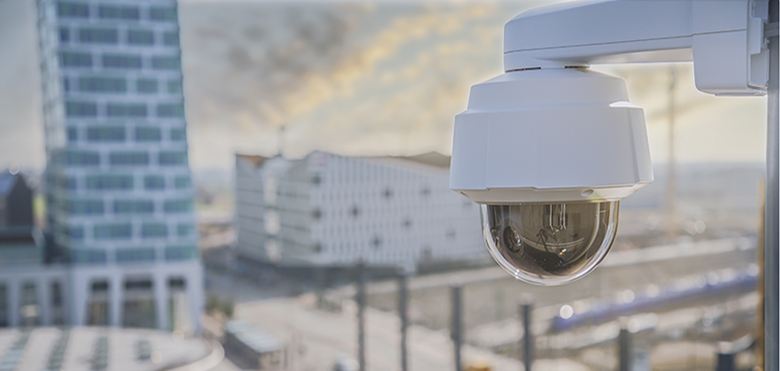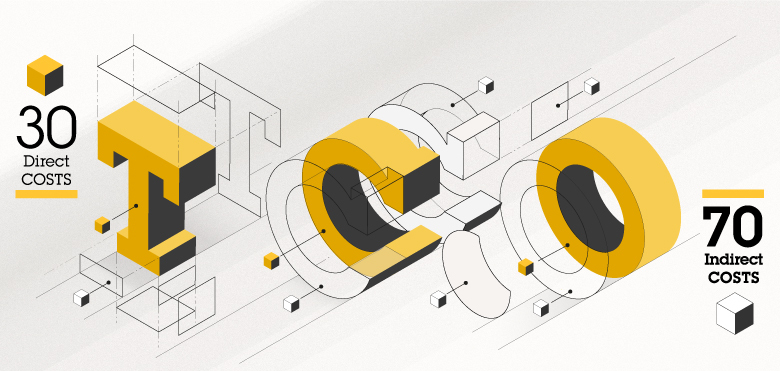Balancing value and total cost of ownership in city surveillance
As data becomes more valuable and important to cities in realizing their smart city vision, authorities are investing in technologies that create, collect and analyze data. Video surveillance cameras and connected devices – the so-called Internet of Things (IoT) – are central among them.
Every technology used in a city comes at a cost, including both the initial investment in hardware and the costs of running and maintaining the solution over its complete lifecycle. A 2017 TCO study of a 1,500-camera video surveillance project over a 10-year lifecycle found that on 34% of the overall costs were in the initial investment in hardware and software; the remaining 66% came from installation, maintenance, and operation.
These costs are weighed up against the value delivered by the solution, which include operational efficiencies, savings in linked technologies (e.g. storage and bandwidth) and more effective use of the city’s resources. Analytics on the edge and deep-learning has been a game changer, by analyzing the data in the camera cities are able to collect “only” the data that the really need, saving both bandwidth and server-power.
The added value of a system can be difficult to calculate, however, and when cities are constantly looking to expand their system, the temptation can be to choose less-costly technology at the outset. However, this can often turn out to be a false economy over the long-term.
Why TCO can be an incomplete view
Total cost of ownership (TCO) models are useful in examining the cost of a video surveillance system over its complete lifecycle, rather than just the initial investment in hardware. A TCO model can help capture all visible expenses associated with the solution. System administration, software licensing fees, cameras and IT maintenance, and energy usage are relatively easy to quantify, particularly if the vendor provides a fixed-cost service package.
Where TCO models are less good is highlighting the potential hidden costs that might come with a video surveillance solution. System downtime is a great example. Given the vastly different implications from user to user – and, indeed, from use case to use case – the financial consequences of system downtime can be serious and significant, but are rarely included in TCO figures.
Quality: the foundation for reliability, robustness and resilience
Within a city, system downtime – for whatever reason – can have direct and indirect implications in costs and investing in quality will have a direct benefit. Malfunction and failure can come from many factors, including an inability to withstand extreme weather or the dust, direct and vibrations that form part of urban life.
The sheer number of cameras in a city’s surveillance solution, which can number hundreds if not thousands, means that the need for regular repair or replacement quickly becomes a significant direct cost. The indirect disruption of surveillance solution maintenance can also impact the functioning of a city. In many cases cameras are positioned in locations where maintenance and replacement results in the disruption of infrastructure, including roads, cycle paths and pavements.
A video surveillance solution that doesn’t allow for remote system health monitoring and management can mean man hours spent physically maintaining cameras. A faulty camera resulting in security teams being unnecessarily deployed due to an inability to visually verify the seriousness of a situation can also be costly. More seriously, system faults delaying a prompt response by emergency services can result in quickly escalating costs.
An additional but critical area of video surveillance and IoT quality that is difficult to factor into TCO models is cybersecurity. Investing in a solution demonstrably ‘secure by design’ and from a vendor committed to updating firmware regularly in response to new vulnerabilities is essential. The number of cyberattacks on smart city infrastructure are increasing, and can seriously affect critical areas of a city’s infrastructure and services – such as emergency services and law enforcement – which can have a huge effect on both cost and safety of citizens.
Future-proofing through flexibility
We’re all familiar with the pace of technological change, and how quickly devices can become seemingly obsolete. With investments as significant as smart city video surveillance projects, future-proofing of systems is critical. Solutions based on open standards bring a level of flexibility that will follow the smart city’s evolution and requirements, something which is valuable in an uncertain world.
We see a strong trend to do “more with less” and video surveillance cameras are becoming more powerful and increasingly multifunctional. Cameras that might have been initially installed for safety and security, with appropriate analytics, can also be used to collect data for city planning, environmental monitoring, parking management and numerous other applications. In effect, one camera could be collecting data that is shared and used by several different authorities involved in managing city infrastructure and services.
Even if a smart city doesn’t have need for every function of a device when the initial investment is made, support for multiple functions brings flexibility moving forwards. With the improved processing power of surveillance cameras – and with it the potential for more advance analytics – an investment in quality today will also support the use of new and enhanced analytics applications in the future.
Balancing cost and value in video surveillance
Ultimately, the total cost of a video surveillance system needs to be balanced against the expected value that the system will deliver to the smart city. That requires a clear definition of the value the city wants to see delivered (and how this will be measured).
Value can be direct – for instance a reduction in vandalism or theft – and also indirect, such as reduced maintenance costs and energy usage. Every city will have a focus on sustainability. In simple terms, surveillance cameras that need replacing less often will have a direct environmental benefit. In addition, looking closely at how manufacturers reduce the amount of plastic in their products, and manage the entire product life cycle to ensure that as much material as possible finds its way back into the industry is critical. A third aspect is how video and IoT can be used support cities to report on the progress against their sustainability goals.
New areas of value can also be created, for instance optimizing and managing traffic and environmental monitoring, which can subsequently lead to ‘softer’ values such as city livability, citizen quality of life and the city’s reputation.
Though committed to the use of technology and data, when making the most of limited resources and budgets, smart city authorities can focus too specifically on cost (and often too much on the initial investment). It’s essential to look not only at the costs of a system over its lifetime – both obvious and hidden – but to balance these against the value delivered. An investment in quality is rarely a mistake.
Read more about how Axis can contribute to your city and TCO model.
Read more about total cost of ownership



